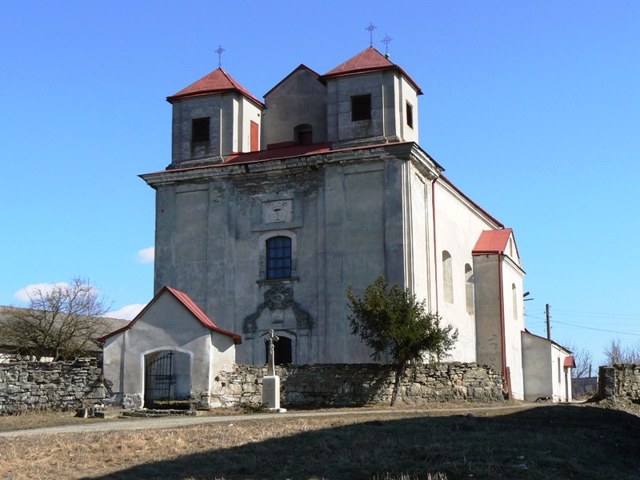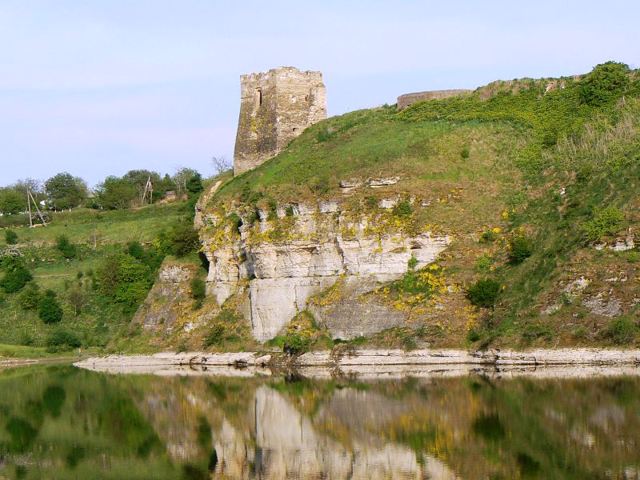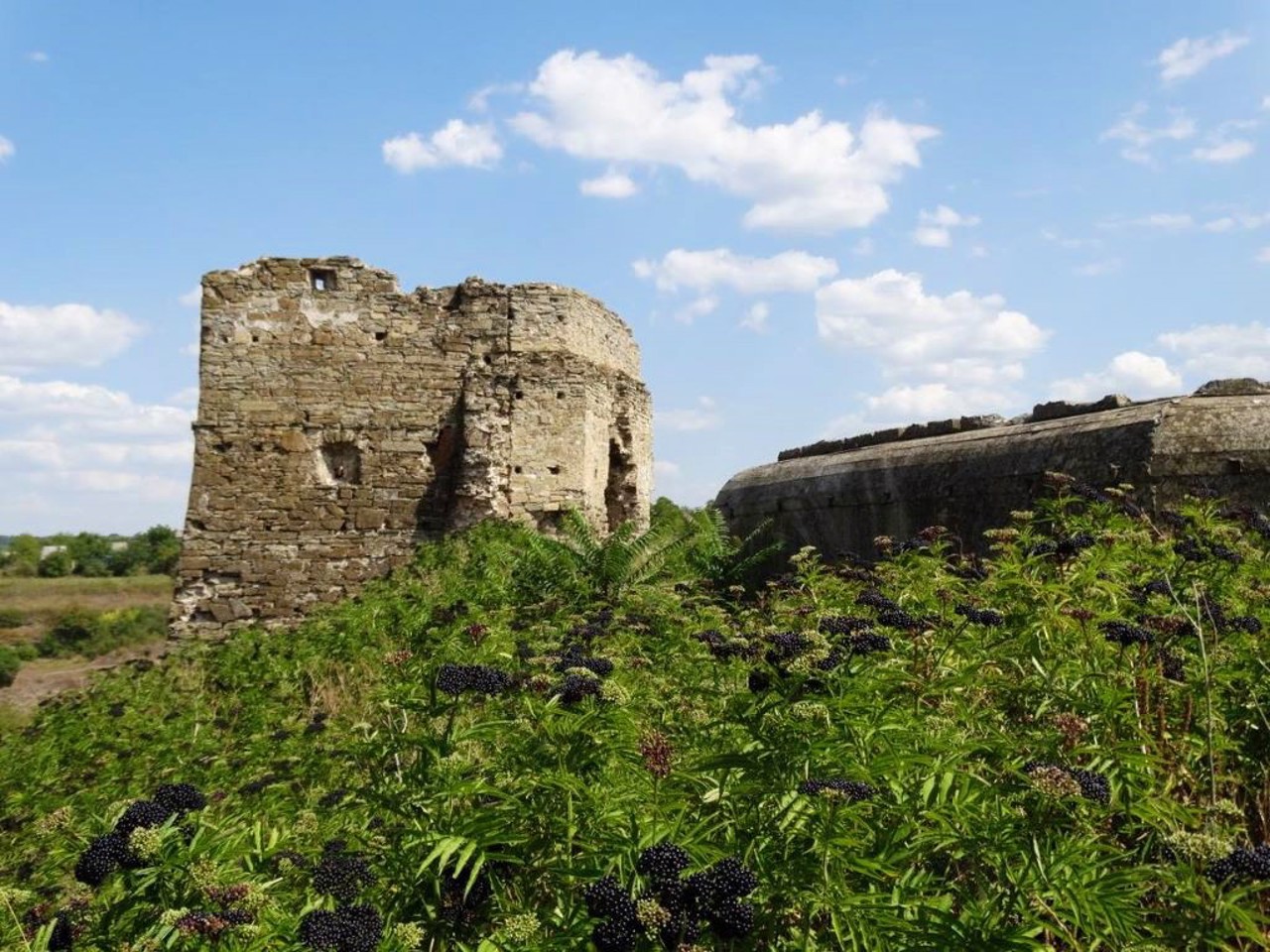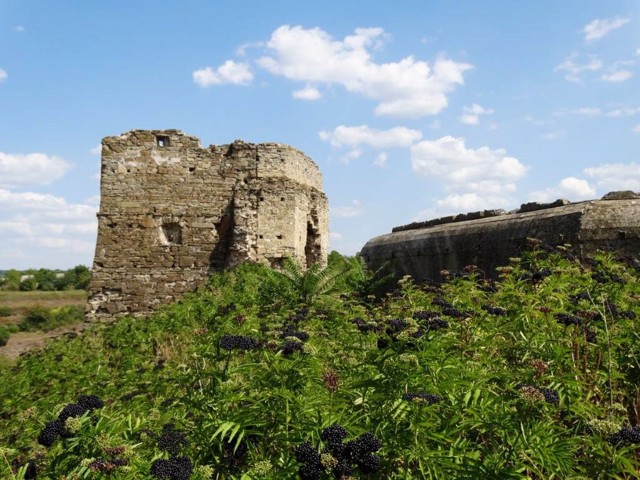Functional temporarily unavailable
Zhvanets
Travel guide online Zhvanets
General information about Zhvanets
The village of Zhvanets is located at the confluence of the Zhvanchyk and Dniester rivers, between Kamyanets-Podilskyi and Khotyn.
It is known since the 15th century when the Polish king Yahello gave these lands to the knight Svichka from Lenchyn.
Due to its convenient strategic location, the settlement was an important strategic center of Transnistria, a fortress was built here. In the 16th and 17th centuries, Kamyanets headman Valenty Oleksandr Kalynovskyi built a new castle on the steep bank of Zhvanets. In 1620, it was destroyed by the Turks who captured Podillya. After the expulsion of the Turks, the castle was rebuilt by Lyantskoronskyi. In 1653, he withstood a siege by the troops of Bohdan Khmelnytskyi, who went from here to Pereyaslav for negotiations with repre ...
The village of Zhvanets is located at the confluence of the Zhvanchyk and Dniester rivers, between Kamyanets-Podilskyi and Khotyn.
It is known since the 15th century when the Polish king Yahello gave these lands to the knight Svichka from Lenchyn.
Due to its convenient strategic location, the settlement was an important strategic center of Transnistria, a fortress was built here. In the 16th and 17th centuries, Kamyanets headman Valenty Oleksandr Kalynovskyi built a new castle on the steep bank of Zhvanets. In 1620, it was destroyed by the Turks who captured Podillya. After the expulsion of the Turks, the castle was rebuilt by Lyantskoronskyi. In 1653, he withstood a siege by the troops of Bohdan Khmelnytskyi, who went from here to Pereyaslav for negotiations with representatives of Moskoviya about a military alliance.
In 1672, Zhvanets again found itself under Turkish rule, after which it again turned into a lively trade center. In 1699, the Armenians built a church, which was later rebuilt into the Church of the Virgin Mary.
In 1793, Zhvanets became part of the Russian Empire, soon lost its strategic importance, and over time the economy began to fade.
Now it is a transit village, interesting only for the picturesque panoramas of the Dniester, the Khotyn fortress and the ruins of the Zhvanets castle.
Село Жванець розташоване на злитті річки Жванчик з Дністром, між Кам'янцем-Подільським та Хотином.
Відоме з XV сторіччя коли король Польщі Ягелло подарував ці землі лицареві Свічці з Ленчина.
Завдяки зручному стратегічному положенню поселення було важливим стратегічним центром Придністров'я, тут була споруджена фортеця. В XVI-XVII столітті кам'янецький староста Валентій Олександер Калиновський збудував на крутому березі Жванця новий замок. В 1620 році його зруйнували турки, які захопили Поділля. Після вигнання турків замок відбудував Лянцкоронський. В 1653 році він витримав облогу військ Богдана Хмельницького, який відправився звідси до Переяслава на переговори з представниками Московії про військовий союз.
В 1672 році Жванець знову опинився під турецьким п ...
Село Жванець розташоване на злитті річки Жванчик з Дністром, між Кам'янцем-Подільським та Хотином.
Відоме з XV сторіччя коли король Польщі Ягелло подарував ці землі лицареві Свічці з Ленчина.
Завдяки зручному стратегічному положенню поселення було важливим стратегічним центром Придністров'я, тут була споруджена фортеця. В XVI-XVII столітті кам'янецький староста Валентій Олександер Калиновський збудував на крутому березі Жванця новий замок. В 1620 році його зруйнували турки, які захопили Поділля. Після вигнання турків замок відбудував Лянцкоронський. В 1653 році він витримав облогу військ Богдана Хмельницького, який відправився звідси до Переяслава на переговори з представниками Московії про військовий союз.
В 1672 році Жванець знову опинився під турецьким пануванням, після закінчення якого він знову перетворився на жвавий торговий центр. В 1699 році вірмени збудували церкву, яка згодом була перебудована на костел Діви Марії.
В 1793 році Жванець увійшов до складу російської імперії, незабаром втратив стратегічне значення, а з часом почала згасати і економіка.
Зараз це транзитне село, цікаве хіба що мальовничими панорамами Дністра, Хотинської фортеці та руїн Жванецького замку.
Сплануй своє перебування у Zhvanets
What to see and where to go in Zhvanets
Tourist attractions and museums of Zhvanets

Immaculate Conception of Blessed Virgin Mary Church
Temple , Architecture
The Church of the Immaculate Conception of the Blessed Virgin Mary was built in 1699. Armenians who moved to Zhvanets after the expulsion of the Turks from Podillya.
Almost a century later, when the Armenians left the city, the building was rebuilt into an impressive baroque Catholic church.
During Soviet times, a factory was located in the premises of the Church of the Immaculate Conception of the Blessed Virgin Mary.
Today, the temple is gradually being restored, and worship has been resumed.

Zhvanets Castle
Castle / fortress
A pentagonal defensive tower on a rock above the river. Zhvanchyk is all that is left of the once powerful Zhvanets Castle.
It was built by the Kamyanets chief Valentiy Kalynovskyi at the beginning of the 17th century, but the first fortifications here arose much earlier. As early as the 15th century, Lithuanians were reconstructing ancient fortifications.
The new Polish fortress, which had 5 towers, competed in size with Kamyanets-Podilskyi. In 1653, during the siege of Zhvanets, Bohdan Khmelnytskyi, betrayed by the Tatars, decided to conclude a military alliance with Muscovy and went from there to Pereyaslav for negotiations.
At the end of the 17th century, the castle was destroyed several times during the Polish-Turkish war. The last attempt at restoration was made by the Lianskoronski nobles as their manor. The Russian government planned to build a large fortress here, but these plans were never implemented. Later, the castle fell into disrepair and was almost completely dismantled.
On the eve of the Second World War, the Pillbox "Stalin Lines" was built on the ruins.
The most picturesque view of the preserved tower opens from the opposite bank of Zhvanets.
Reviews Zhvanets
Geographical information about Zhvanets
| {{itemKey}} | {{itemValue}} |
|---|---|
| Region |
Khmelnytskyi |




